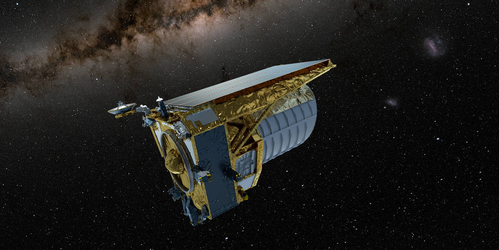Paris: The European Space Agency’s (ESA) Euclid mission, which will explore the dark Universe, is expected to launch on Saturday, the agency has said.
The space telescope will lift off from Cape Canaveral Space Force Station in Florida, on a SpaceX Falcon 9 rocket July 1.
Euclid aims to shed light on the nature of dark matter and dark energy, two of the biggest modern mysteries about the universe. To date, astronomers have not been able to detect either of them directly, only inferring their presence from the effects they have on the Universe at large.
“Dark energy and dark matter reveal themselves by the fairly subtle changes they make to the appearance of objects in the visible universe; otherwise we don’t know about them,” said Rene Laureijs, Euclid project scientist, at a pre-launch briefing.
The space telescope will create the largest, most accurate 3D map of the Universe ever produced, observing shapes and movements of billions of galaxies across 10 billion years of cosmic time, over more than a third of the sky.
By observing billions of galaxies out to a distance of 10 billion light-years, scientists will be able to chart the position and velocity of galaxies over immense distances and through most of cosmic history, and trace the way the Universe has expanded during that time. Euclid’s extraordinary optics will also reveal subtle distortions in the appearance of galaxies.
From the new data, astronomers aim to infer the properties of dark energy and dark matter more precisely than ever before.
The two-tonne spacecraft, which is 4.7 metres tall and 3.5 metres wide, is a fully European mission — built and operated by ESA, with contributions from NASA.
Euclid is headed for the Earth-sun Lagrange Point 2 (L2), a gravitationally stable spot about 1.5 million kilometres from Earth. Two instruments aboard the telescope that specialise in infrared (heat) and visual wavelengths will work together to image large swaths of the sky, to infer where dark matter may be lurking by charting its effects on visible objects.
The telescope’s commissioning period will last roughly eight months, including a one-month transit to L2. The team expects to begin full operations around April 2024. The $1.5 billion mission is planned to last until 2029.
IANS






































